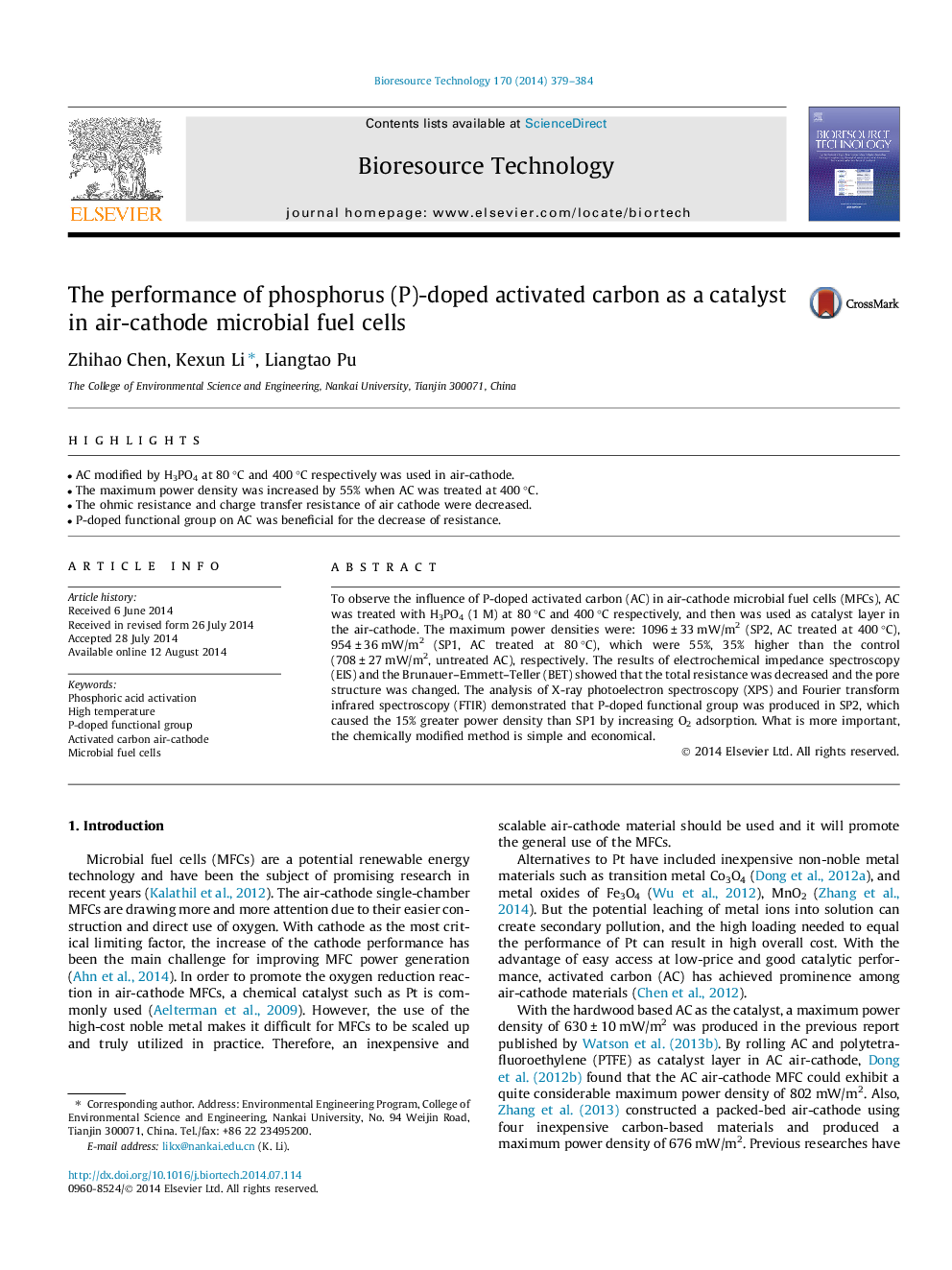| Article ID | Journal | Published Year | Pages | File Type |
|---|---|---|---|---|
| 680441 | Bioresource Technology | 2014 | 6 Pages |
Abstract
To observe the influence of P-doped activated carbon (AC) in air-cathode microbial fuel cells (MFCs), AC was treated with H3PO4 (1 M) at 80 °C and 400 °C respectively, and then was used as catalyst layer in the air-cathode. The maximum power densities were: 1096 ± 33 mW/m2 (SP2, AC treated at 400 °C), 954 ± 36 mW/m2 (SP1, AC treated at 80 °C), which were 55%, 35% higher than the control (708 ± 27 mW/m2, untreated AC), respectively. The results of electrochemical impedance spectroscopy (EIS) and the Brunauer-Emmett-Teller (BET) showed that the total resistance was decreased and the pore structure was changed. The analysis of X-ray photoelectron spectroscopy (XPS) and Fourier transform infrared spectroscopy (FTIR) demonstrated that P-doped functional group was produced in SP2, which caused the 15% greater power density than SP1 by increasing O2 adsorption. What is more important, the chemically modified method is simple and economical.
Related Topics
Physical Sciences and Engineering
Chemical Engineering
Process Chemistry and Technology
Authors
Zhihao Chen, Kexun Li, Liangtao Pu,
